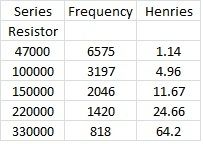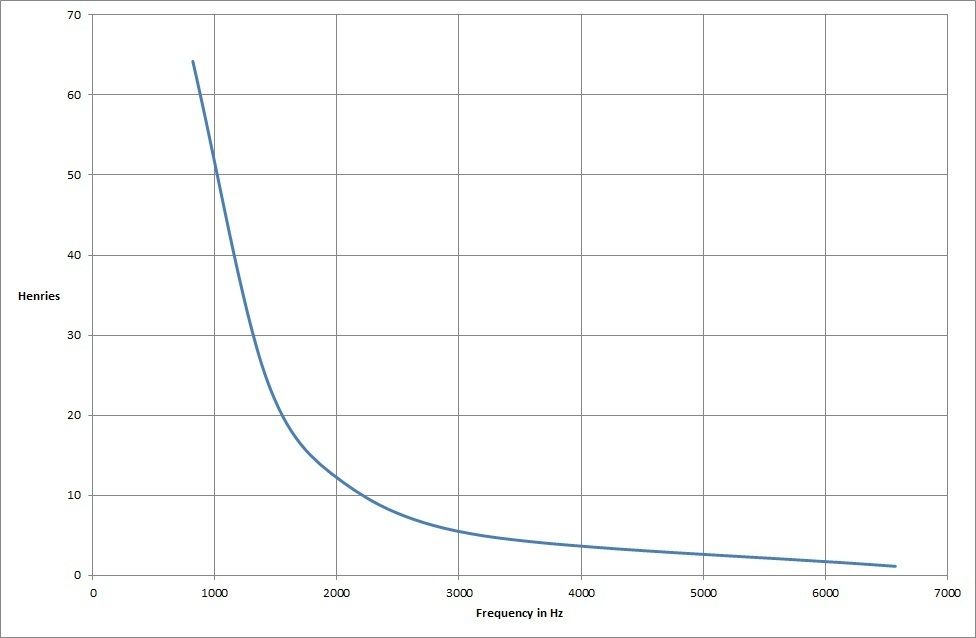Happy New Year to everyone,
My LCR meter only goes up to 20H like most of them do, so to test the primary of an Edcor XSM15k 600 TX I needed another method. The most straight forward method, that is popular on the web, is to put a series resistor in line with the inductance with a probe from each channel of a scope either side. You then vary the frequency of the sig gen until one trace is exactly 50% of the other. My scope has a built-in frequency counter so it seemed like a good test. Using this formula H= XL/2pi x f you can find the inductance when the reactance matches the series resistor, what could go wrong?
I decided to do the test with several different resistors to check the result, lucky I did because there is obviously another factor to take into account, here's the data:-


As you can see, the result you get depends on the test resistor used, so there must be a correction factor for phase to compensate the data, there is no mention of this in the methods shown on you tube etc.
Does anyone know how to do this? Sines? Cosines? I think I can remember them OK.
Mumble mumble current lags voltage by 90 degrees mumble mumble :-\
Best
DaveP
My LCR meter only goes up to 20H like most of them do, so to test the primary of an Edcor XSM15k 600 TX I needed another method. The most straight forward method, that is popular on the web, is to put a series resistor in line with the inductance with a probe from each channel of a scope either side. You then vary the frequency of the sig gen until one trace is exactly 50% of the other. My scope has a built-in frequency counter so it seemed like a good test. Using this formula H= XL/2pi x f you can find the inductance when the reactance matches the series resistor, what could go wrong?
I decided to do the test with several different resistors to check the result, lucky I did because there is obviously another factor to take into account, here's the data:-


As you can see, the result you get depends on the test resistor used, so there must be a correction factor for phase to compensate the data, there is no mention of this in the methods shown on you tube etc.
Does anyone know how to do this? Sines? Cosines? I think I can remember them OK.
Mumble mumble current lags voltage by 90 degrees mumble mumble :-\
Best
DaveP



